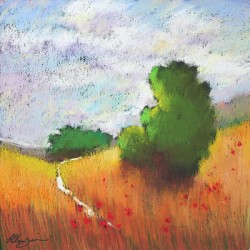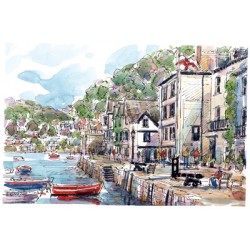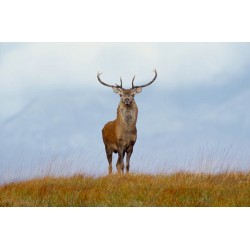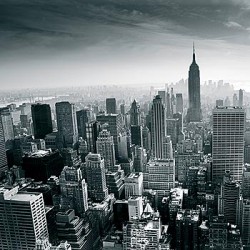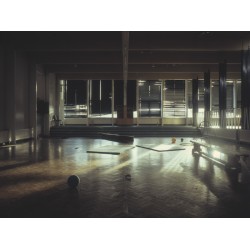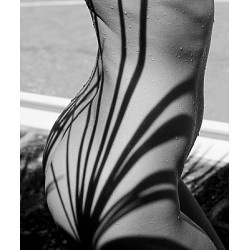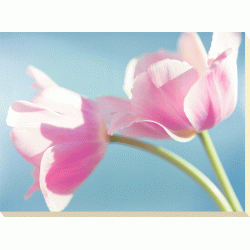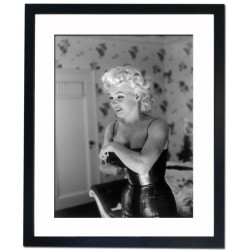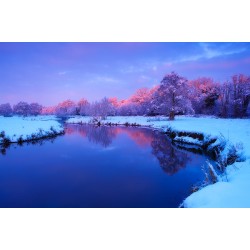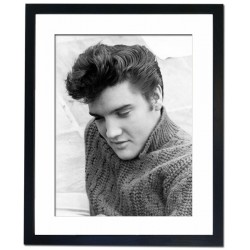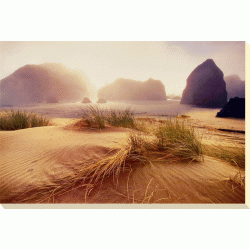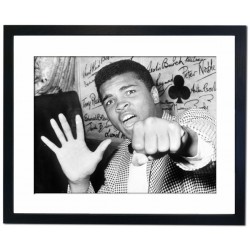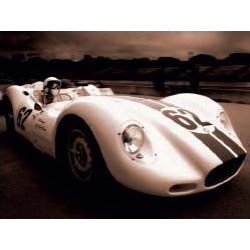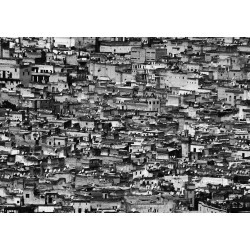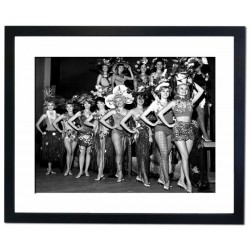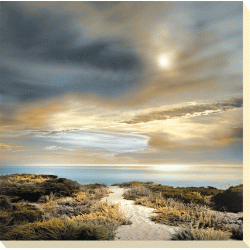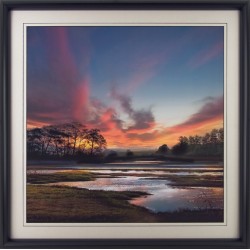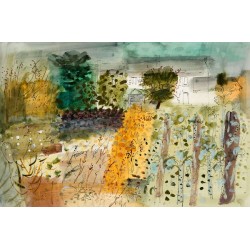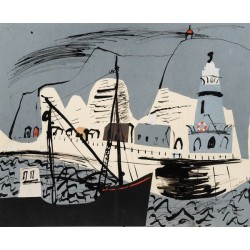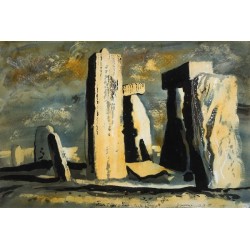Now considered one of the most significant British artists of the Twentieth Century, John Piper was born in Epson, 1903. Not persuaded by his solicitor father to pursue a career in law, Piper enrolled at Richmond School of Art, and subsequently at the Royal College of Art, London.
In the early 1930’s Piper exhibited with the London Group before being invited by Ben Nicholson to join the Seven and Five Society whose members were Henry Moore, Ivon Hitchens, and Barbara Hepworth. Soon after Piper met the writer Myfanwy Evans, and the couple moved to Fawley Bottom, an abandoned farmhouse in the Chilterns, where Piper would reside his entire life.
But in the early thirties Piper also spent time in Paris, to visit Alexander Calder, Brancusi and Jean Hélion – avant-garde artists with an interest in abstraction, and by whom Piper was initially influenced. Soon after, however, Piper returned to his characteristic naturalistic style, and to his primary subject matter – the painting of derelict monuments and churches, subjects he first explored as a boy.
Myfanwy introduced Piper to John Betjeman, and Betjeman, then working on the Shell Guides, asked Piper to illustrate the Guide to Oxfordshire. Piper concentrated on churches for the Guide, but this collaboration was amongst many: Piper designed sets for the poet and composer Stephen Spender, and later for the composer Benjamin Britten and his productions at Glyndbourne. He also collaborated on pottery designs with Geoffrey Eastop who, for several years, had a studio alongside Piper’s at Fawley Bottom.
During the Second World War Piper was persuaded by Kenneth Clark to work as an Official War Artist, and again, Piper concentrated on the depiction of ruined buildings and churches. He would arrive soon after the destruction had been wrought, to sketch and record, and paint in oils later – thus his depiction ‘Interior of Coventry Cathedral’, for instance, which resulted from sketches made on the morning after the air raid of 14th November, 1940. But Piper also worked on the Recording Britain project set up by Kenneth Clark to record historic buildings or buildings of importance thought to be at risk of being bombed.

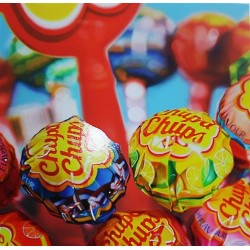
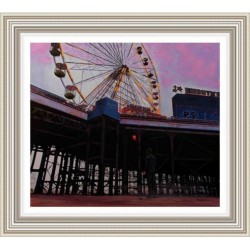
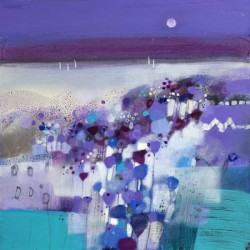
-250x250.jpg)

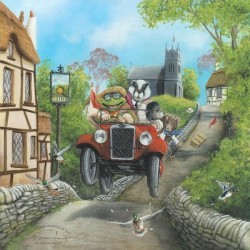
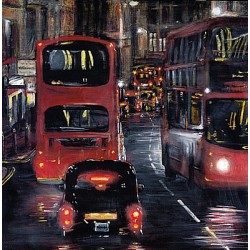
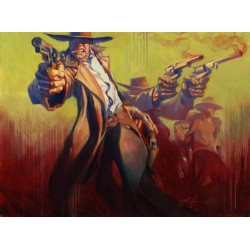
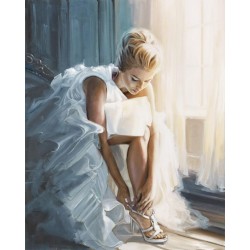

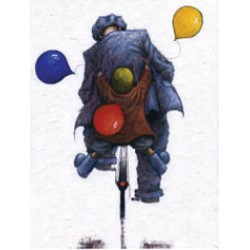
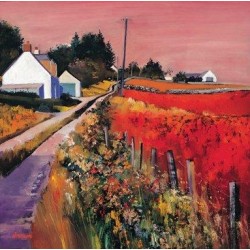
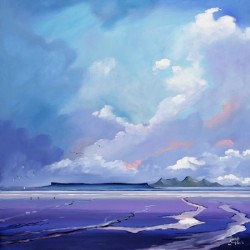
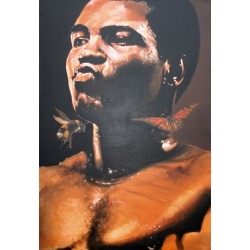
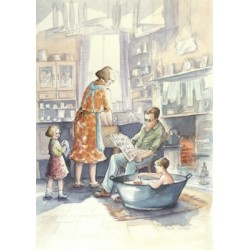
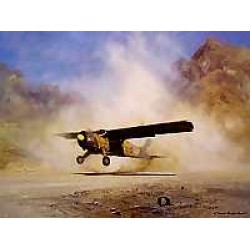
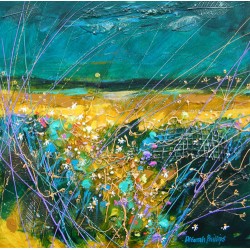
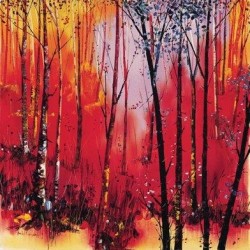
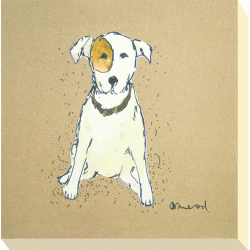
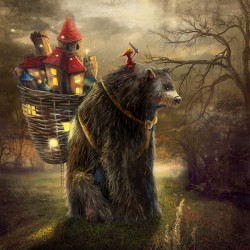
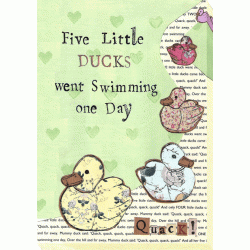
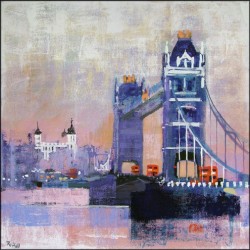
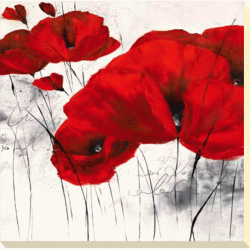
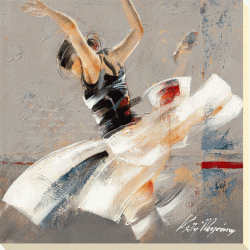
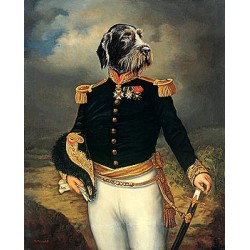
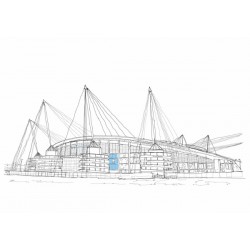
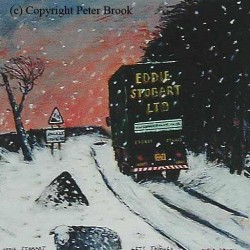
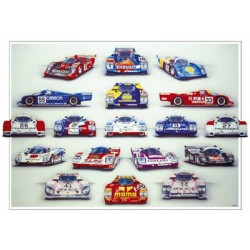
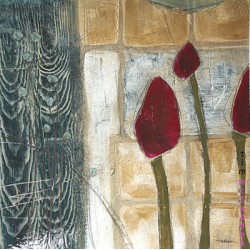
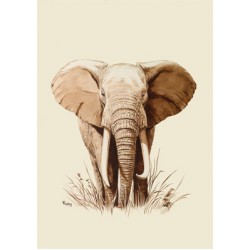
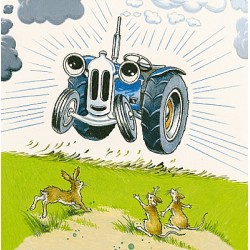
%20120-250x250.JPG)
